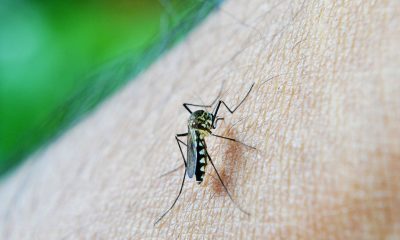An existing virus could become a worldwide threat amid the ongoing COVID-19 pandemic, and children are the most at risk group of catching it. Experts are worried that should the pandemic continue, outbreaks of the infection it causes in kids could be inevitable.
Mounting Risk Of Measles Outbreak
The Centers for Disease Control Prevention said in a media statement last week that the pandemic has caused a critical gap in the vaccination programs against measles. As such, while measles infection cases have largely fallen during the pandemic, there is mounting risk of outbreaks happening in the future as the progress toward measles elimination also declined.
In the first year of the pandemic, which was in 2020, over 22 million infants missed their first dose of the vaccine for measles due to the lockdowns and temporary cessation of economic operations. The figure is said to be 3 million more than the one recorded in 2019.
What Is Measles?
Measles is a childhood infection caused by the rubeola virus. The disease was previously very common, but vaccination helped control its spread and even lowered its incidence in children in many parts of the world.
A measles infection can be serious and even fatal. However, death rates have significantly lowered ever since the measles vaccine started rolling out. But even if high vaccination rates have been reported worldwide in the recent years, over 10,000 kids under the age of 5 still die each year, according to Mayo Clinic.
The signs and symptoms of the infection typically start to manifest around 10 to 14 days after exposure to the virus. They include fever, dry cough, runny nose, sore throat, conjunctivitis, a skin rash that’s made up of large, flat blotches and tiny white spots with bluish-white centers called Koplik’s spots.
Deterioration Of Measles Surveillance
The pandemic brought big changes to everyone’s daily routine and the society as a whole. In the healthcare sector, surveillance of measles cases drastically deteriorated when the lockdowns were enforced and people were advised to quarantine at home.
As the world focused more of its attention on the SARS-CoV-2 situation, 26 countries quietly battled major measles outbreak that accounted for 84% of all measles infections in 2020. But now that the pandemic has moved on to its second year, the risk of having more measles outbreaks has undeniably gotten higher.
“Large numbers of unvaccinated children, outbreaks of measles, and disease detection and diagnostics diverted to support COVID-19 responses are factors that increase the likelihood of measles-related deaths and serious complications in children,” CDC’s Global Immunization Director Kevin Cain, MD, said.
Incidence Of Measles Infection In The US
Measles was declared eliminated from the United States in 2000, when the country strengthened its vaccination programs against the virus. However, this does not mean that there are no longer measles infection cases reported in the country.
Measles cases and outbreaks still occur in the U.S., but they are mostly caused by unvaccinated tourists who carry the virus and transmit it to the unvaccinated people in the country. The highest number of cases reported in the recent years was in 2019 when about 1,282 people contracted the virus, according to CDC.
In the wake of the recent findings about the risk of measles outbreaks happening around the world amid the pandemic, experts are urging countries to strengthen their immunization programs for children. This way the threat of having a widespread outbreak of measles is greatly diminished.
“It’s critical that countries vaccinate as quickly as possible against COVID-19, but this requires new resources so that it does not come at the cost of essential immunization programs. Routine immunization must be protected and strengthened; otherwise, we risk trading one deadly disease for another,” World Health Organization’s Department of Immunization, Vaccine and Biologicals director Dr. Kate O’Brien said.
















